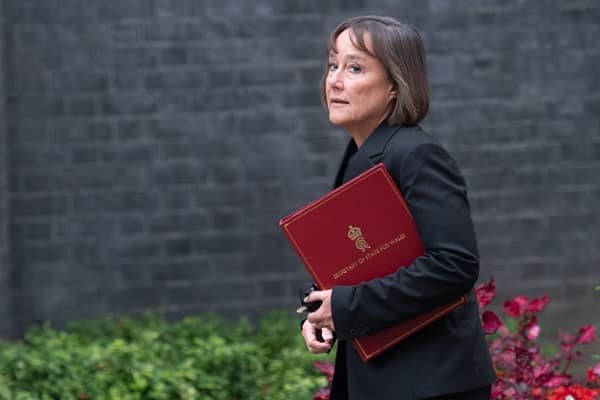Bussiness
Jobs day arrives amid lingering geopolitical risk – London Business News | Londonlovesbusiness.com

Digest – The dollar bound higher once more yesterday, as Treasuries continued to sell-off, while sterling stumbled. All eyes today focus on the September US jobs report, amid ongoing geopolitical risks.
Where We Stand – Another day, yesterday, where participants tried to set geopolitical concerns to one side, though ultimately were left with no choice but to remain squarely focused on the Middle East.
Comments from President Biden were the trigger for a brief risk-off move during the session, after Biden reportedly stated that discussions were ongoing over whether the US would support an Israeli strike on Iranian oil infrastructure.
While no such strike has yet to be carried out, crude continues to – reasonably – price an elevated geopolitical risk premium, with front WTI rallying as much as 5% on the day, the biggest 1-day advance in almost a year, with the front contract touching its best levels in a month.
Short crude, for now, still feels like something of a ‘widowmaker’ trade, given how fluid the situation in the Middle East remains; with the weekend on the horizon, I can’t imagine many wanting to run bearish oil exposures while markets are closed.
Stocks also came under some pressure as a result of the aforementioned geopolitical tensions, with both the S&P and Nasdaq ending the day in the red. Intraday rallies continue to be sold into relatively rapidly, with participants seeking to take profit in short order, as opposed to letting a trade run, as they may otherwise seek to do so in more ‘normal’ times, a clear sign of ongoing jitters over the precarious geopolitical situation.
In the equity derivatives space, meanwhile, further signs of nervousness are on offer. The VIX is happily residing north of the 20 figure, a level that we’d typically take to imply an elevated level of fear in the market, while the 1-month S&P 500 skew shows put volatility trading at its highest premium over calls since early-September, showing an increased demand for downside protection via options contracts.
Away from events in the Middle East, Thursday brought a couple of other interesting macro developments.
Stateside, the ISM services PMI report stole the show, with the index vastly surpassing the top of the forecast range, rising to 54.9 last month, pointing to the fastest pace of expansion since February last year. While the details of the report were a little mixed, as the prices paid metric rose to its highest level since January, and the employment index slipped to a 3-month low, markets did not appear particularly perturbed, instead preferring to focus on the strong headline print.
This, added to lingering geopolitical risks, was enough to take the dollar to a fourth straight daily gain, the buck’s best run since mid-September, while also taking the DXY north of the 102 figure, to its highest level since late-August.
Once again, incoming data points to the US economy maintaining solid momentum, not only making the Fed’s 50bp September cut all the more mind-boggling, but also reinforcing my base case of a 25bp per meeting cadence of easing from here onwards, until rates return to neutral. Of course, a soft jobs report today would see all that having to be thrown out the window!
Speaking of policy, we heard from BoE Governor Bailey yesterday.
Bailey appeared to make something of a dovish pivot, noting in a Guardian interview that the BoE could move a little more quickly on rate cuts, providing incoming inflation data continues to behave itself. That statement, though, was heavily caveated – “if the news on inflation continued to be good there was a chance of the Bank becoming “a bit more activist in cutting rates”. Not exactly the cast iron guarantee of a faster pace of rate cuts that the market interpreted this as!
That interpretation, anyway, saw cable sink over 1% on the day, in the quid’s biggest one-day decline for 18 months, with spot touching 3 week lows just south of 1.31. This all seems rather over-done to me, particularly considering the conditionality of the statement, the relatively worrying signs of persistent services inflation within the UK economy, and the fact that there are still 4 of the 9 member MPC who aren’t even in favour of one cut, let alone a series of them. Still, I suppose this elevated level of vol is what happens when BoE speakers are few and fare between, and seldom make pertinent remarks on the policy outlook, meaning their words are seized upon on those rare occasions when we hear from them.
While I’d be buying the GBP dip here, at the 1.31 figure, it is worth noting that long GBP positioning is very crowded at the moment. A position unwind likely played some role in yesterday’s chunky move lower, and could exacerbate any further declines if longs decide to bail out of the ‘hawkish BoE’ trade en masse.
Look Ahead – Jobs day is finally here, with all eyes now turning to the September US labour market report.
Headline nonfarm payrolls are set to have risen by +150k last month, a modest uptick from the +142k pace seen in September. Leading indicators for the jobs print are somewhat mixed, with the ISM manufacturing and services surveys both indicating a decline in employment, though both initial and continuing claims metrics declined between the August and September survey weeks, by 11k and 26k respectively. Last September, declines of that magnitude saw the NFP print +246k, for what it’s worth.
Elsewhere, unemployment should hold steady at 4.2%, on an unchanged participation rate of 62.6%. Earnings growth, meanwhile, is set to remain contained, at 0.3% MoM, and 3.8% YoY.
Of course, with the FOMC having now obtained sufficient confidence in inflation returning towards the 2% target, the labour market has become the primary determinant of future policy shifts. A soft set of data today, particularly if unemployment were to rise north of the 4.4% 2024 median SEP projection, would likely see markets go ‘all in’ on the idea of a second straight 50bp cut being delivered at the November meeting, an outcome to which a roughly 30% probability is currently assigned. There is, however, one more jobs report due just before that next FOMC decision.
In terms of the market reaction more broadly, it feels like a ‘good news is good news’, and vice versa, play in terms of risk sentiment, with investors likely to focus more on the macroeconomic picture that the report portrays, as opposed to any policy implications that the data may have.
Conviction, though, particularly among longs, may well be limited amid continuing geopolitical tensions, and as participants seek to manage risk and hedge exposures into the weekend.








